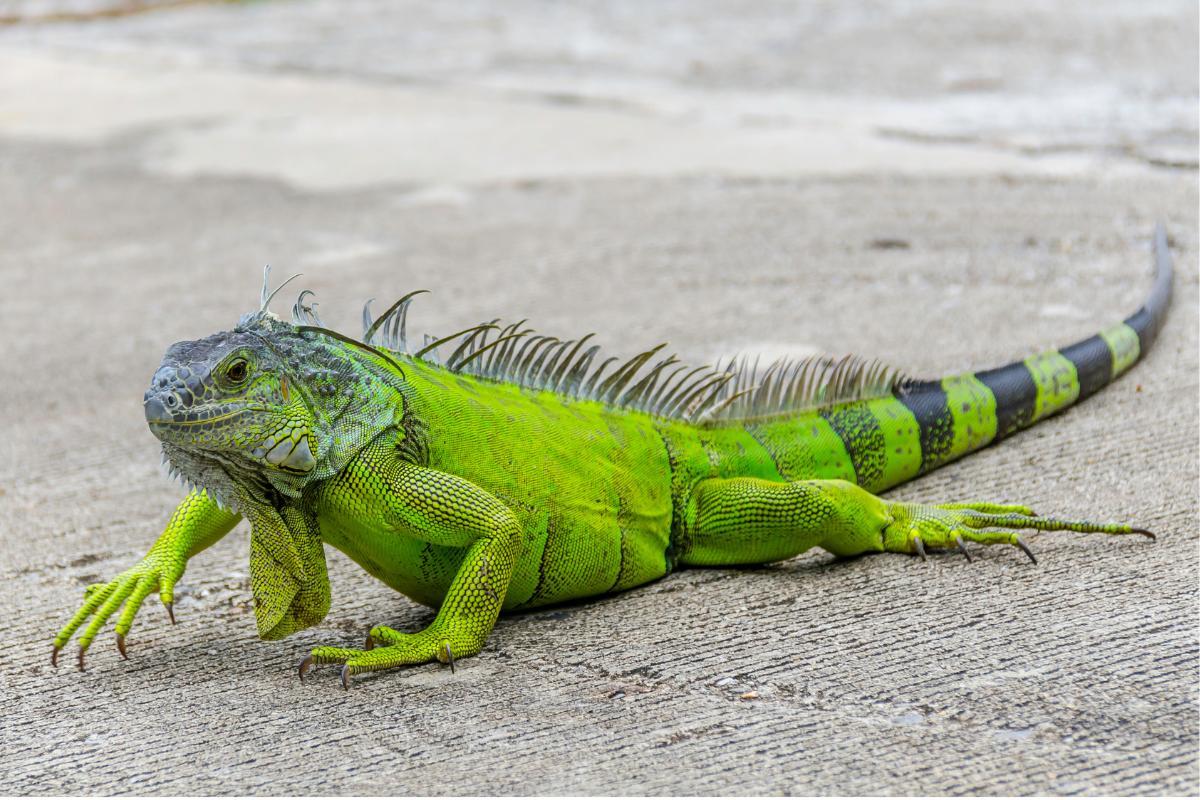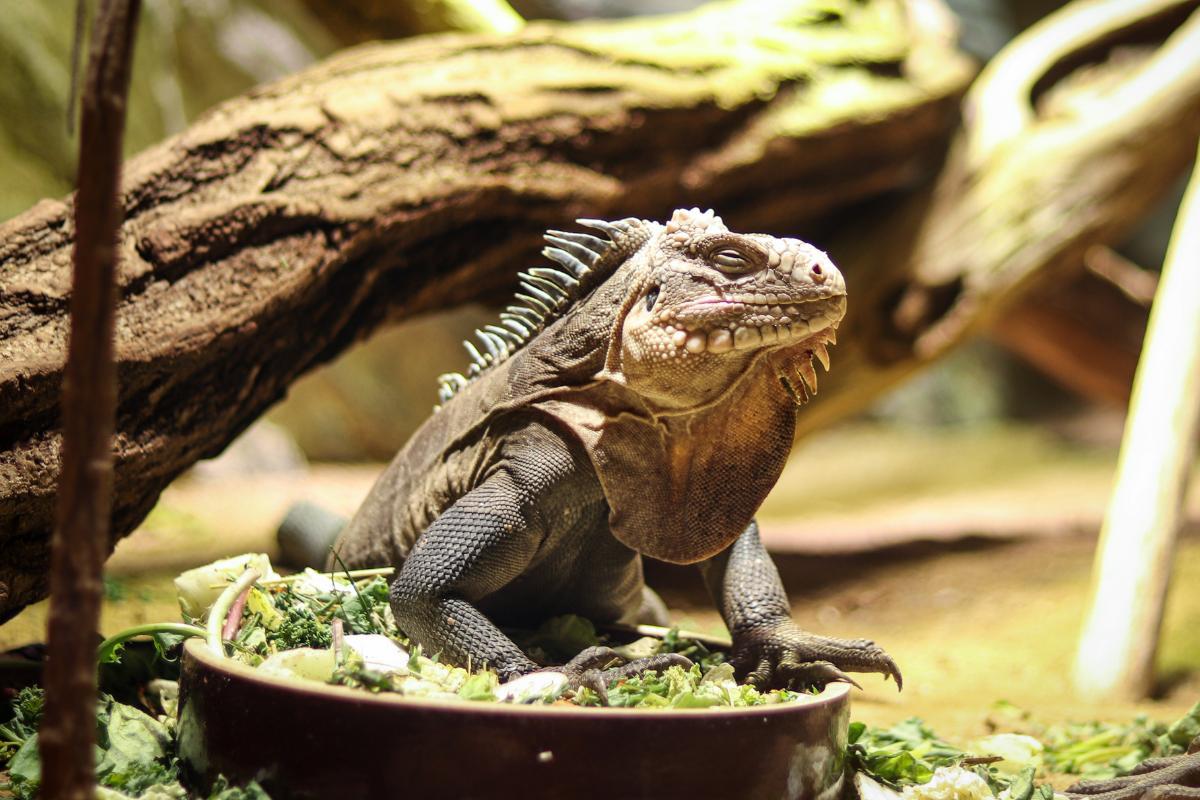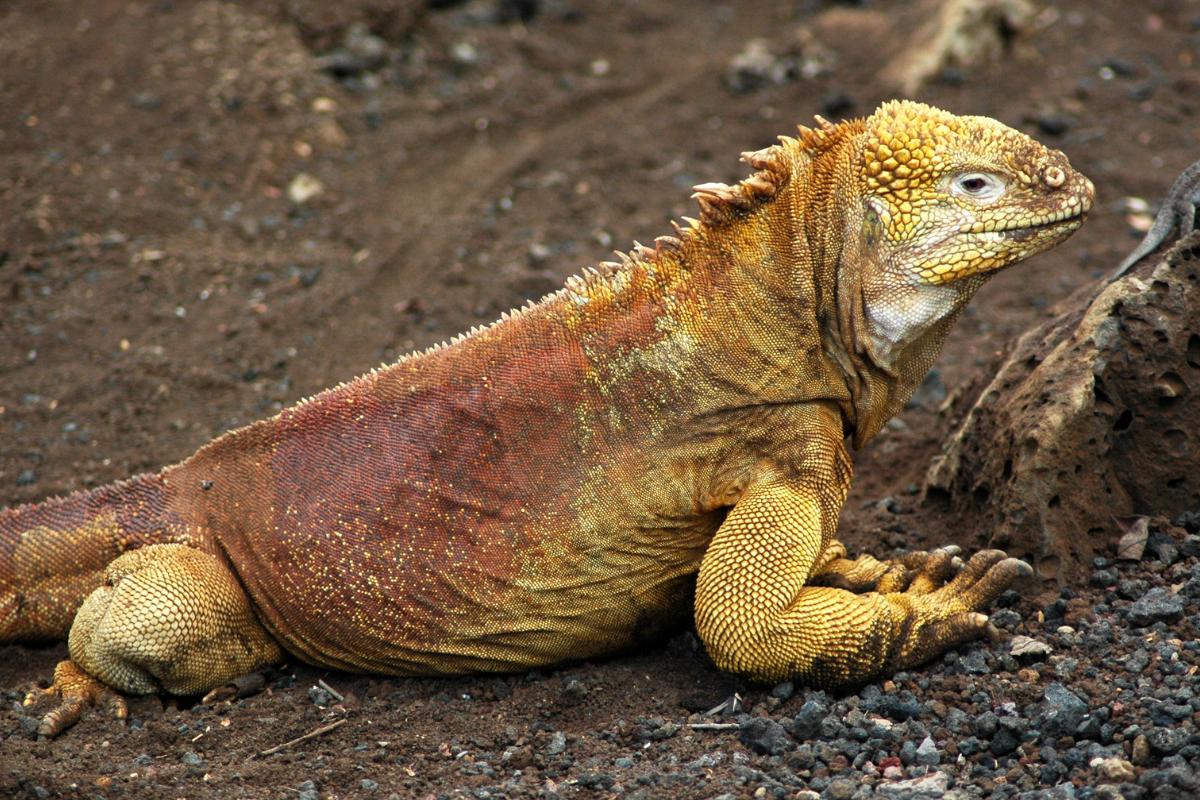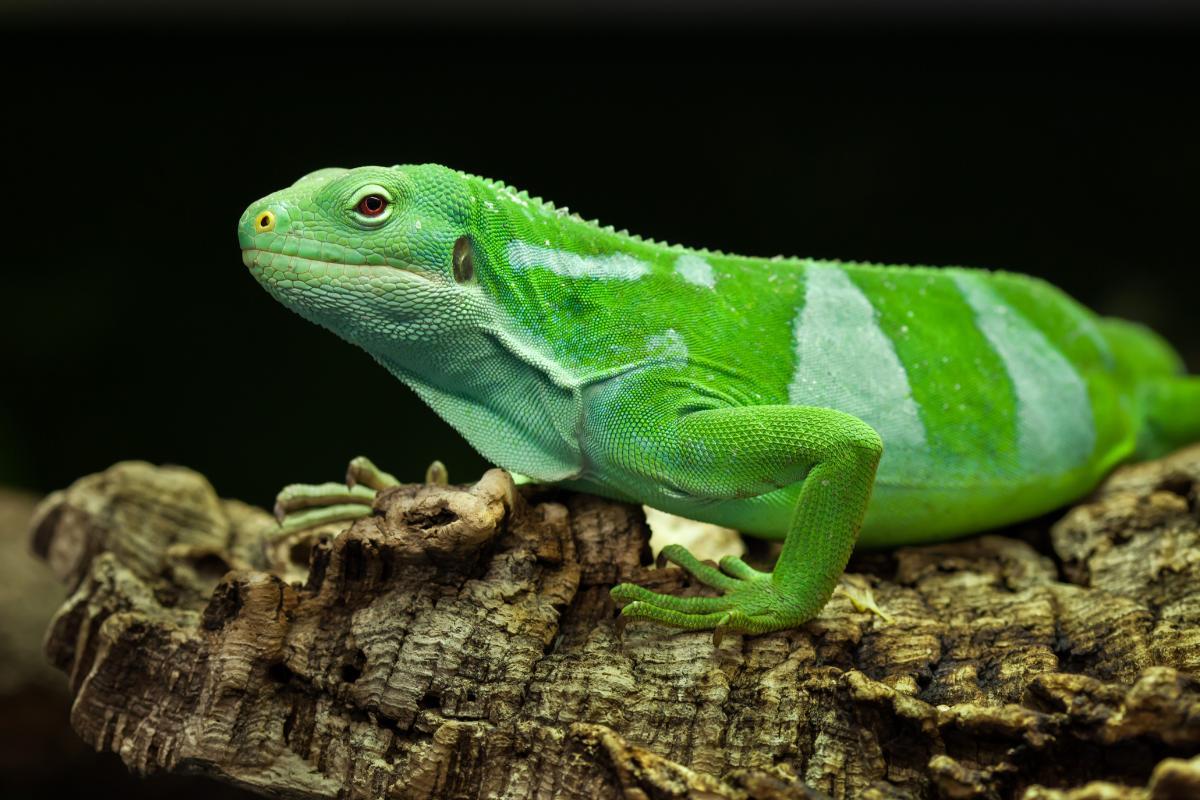Different Types of Iguana

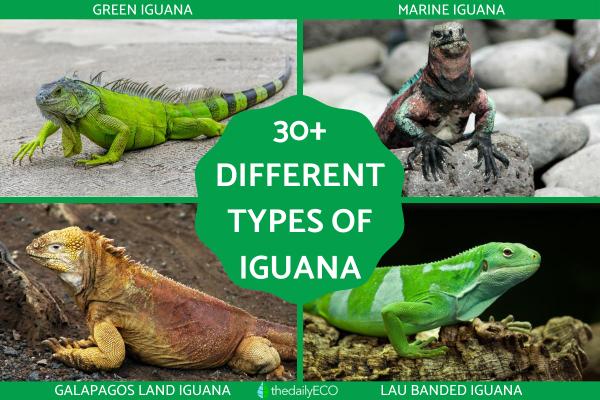
When it comes to grouping the different iguana types, there is some confusion over their taxonomic classification. All iguanas are lizards from the family Iguanidae, although some of the members of this family are not iguanas. This is the case with the chuckwalla. The genus Iguana is the most associated with iguanas, containing only two species. These are the green iguana (Iguana iguana) and the Lesser Antillean iguana (Iguana delicatissima). Outside of this genus, there is also a lizard known as the marine iguana (Amblyrhynchus cristatus). Some of these species also contain subspecies.
thedailyECO helps to clear up any confusion by providing the 30+ different types of iguana with photos. We explain the species and subspecies, as well as discover whether there are any iguana breeds.
How are iguanas classified?
Iguanas are diurnal, terrestrial, arboreal or semi-aquatic reptiles that are part of the Iguanidae family. The members of this family are mainly distributed throughout the American continent, although there are two genera in Madagascar and Fiji. According to the latest taxonomic classifications, the Iguanidae family includes the following genera:
- Amblyrhynchus: 1 species in the Galapagos Islands.
- Brachylophus: 2 species in Vanuatu and Fiji.
- Conolophus: 3 species in the Galapagos Islands
- Ctenosaura: 14 species in Central and North America (mainly southern United States and Mexico).
- Cyclura: 10 species in the Caribbean.
- Dipsosaurus: 1 species in North America.
- Iguana: 2 species in Central, South America and the Caribbean.
- Sauromalus: 6 species in North America.
While the genus Iguana only has two extant species, there are other members of this family which bear the common name ‘iguana’. We look at them all in the sections below with the different types of iguana.
Green iguana
Also known as the common iguana or American iguana, the green iguana (Iguana iguana) is the most common type of iguana in the world. They are arboreal and individuals can grow to be very large, with some growing over 6.5 ft (2 m) in length from head to tail. They are native to the Americas, with a distribution range which extends from the US through to Mexico, Brazil and as far south as Argentina and Chile.
Green iguanas mainly live in humid tropical forests and mangroves. However, they have managed to adapt to arid and semi-arid regions. They are herbivorous animals, mainly eating leaves (making them largely folivorous). Although arboreal, they come down from trees to lay their eggs. Their body is covered with scales which are usually green in color. They also have a dorsal crest which is larger in males to attract attention when mating.
In addition to having a very large natural distribution, they have become an invasive species in some areas. This is largely due to their adoption as a companion animal. Unfortunately, they are difficult to care for and many people abandon their animal in their local ecosystems where they become invasive.

Lesser Antillean iguana
Also known as the West Indian iguana, the Lesser Antillean iguana (Iguana delicatissima) is a species of iguanid endemic to the Lesser Antilles, hence their common name. They live in xeric scrublands, coastal forests, riverine forests and mangroves among trees or low shrubs.
Lesser Antillian iguanas are generalist herbivores and feed on leaves, flowers and fruits. They can occasionally eat meat, something also common in green iguanas. Their population has suffered a drastic reduction mainly due to the introduction of the exotic and invasive green iguana, as well as due to habitat fragmentation and destruction. It is for this and other reasons that it has been classified as critically endangered by the IUCN.
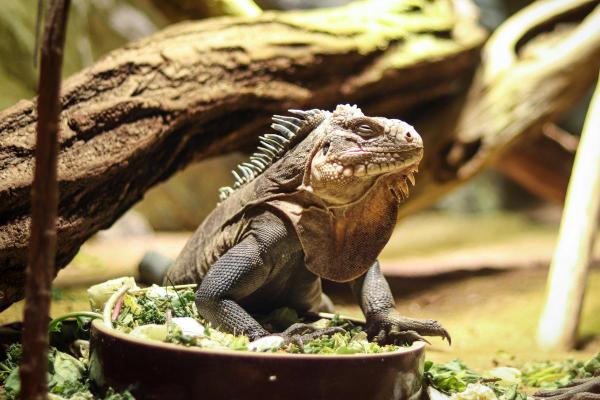
Marine iguana
Also known as the sea iguana or saltwater iguana, the marine iguana (Amblyrhynchus cristatus) is endemic to the Galapagos Islands of Ecuador and is the only species within its genus. It mainly lives on rocky coasts, although it can be seen on beaches and in mangroves. It feeds on seaweed and is able to swim in the ocean waters, although only adult males can do so due to their larger size. Males can reach between 6.5-9.8 ft (2-3 m) in length. Females and their offspring feed at low tide when the algae has become uncovered by water.
Excess salt must be eliminated through nasal glands. Marine iguanas are the only known species to use a lek mating system in which dominant males defend small territories from other males. Marine iguanas have been categorized as vulnerable by the IUCN.

Galapagos land iguana
The Galapagos land iguana (Conolophus subcristatus) is endemic to the Galapagos archipelago of Ecuador, one of the most biodiverse places on the planet. It is found in arid or sparsely vegetated regions of the islands. Its diet is based on more than 30 different species of plants, obtaining most of its nutrients from cacti of the genus Opuntia. Occasionally, they may eat insects or carrion.
Like other iguanas, the Galapagos and iguana plays a fundamental role in the dispersion of seeds from the archipelago's various plant species. All of their populations are included in different protected areas such as the Galapagos National Park and Marine Reserve. In these areas, programs have been developed to eradicate their main threats which include wild goats, dogs and cats. These animals kill adult iguanas and destroy their nests and eggs.
Discover more about seed dispersal with our article on how plants spread seeds.
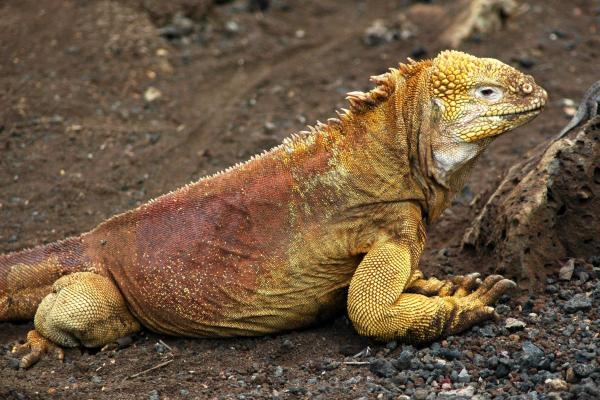
Western spiny-tailed iguana
Also known as the black spiny-tailed iguana, the western spiny-tailed iguana (Ctenosaura pectinata) is native to western Mexico where it lives in deciduous forests on dry rocky sites and in coastal ravines. This species has been introduced in Texas and Florida in the United States. Its body can measure up to 4 ft (1.2 m) in length and has black scales with irregular yellowish or white spots.
The black iguana is diurnal and its diet includes everything from leaves and fruits to insects. It may also include small mammals and birds. Black iguanas are of great economic and cultural importance to rural communities and have been intensively hunted for food. In addition, the fragmentation and destruction of their habitat constitutes the second most important threat to this species.
Check out our article on the differences between salamanders and geckos to learn about other types of lizard.

Lau banded iguana
The Lau banded iguana (Brachylophus fasciatus) is one of the smallest types of iguanas, reaching a maximum of 2 ft (60 cm) in length. It has a unique coloring which makes it easily distinguishable from other iguana species as their body has intense green colors with large vertical stripes. Their tail is also darker.
This iguana species is arboreal and inhabits humid and dry forests on the islands of Fiji, Aiwa and Vuaqava (both uninhabited). Although there are populations in Tonga, they appear to be introduced specimens. Currently, it is in danger of extinction due to various threats it faces, such as the introduction of invasive exotic species, the destruction of forests and illegal exploitation.
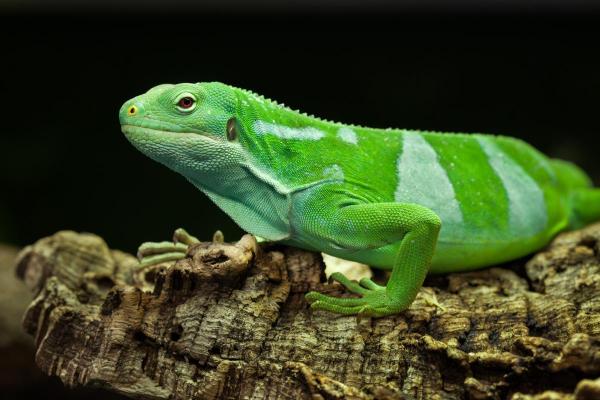
Other types of iguanas
In addition to those listed above, we can also find the following types of iguana:
- Pinzon island iguana (Conolophus subcristatus)
- Yellow-backed spiny-tailed iguana (Ctenosaura flavidorsalis)
- Black iguana (Ctenosaura similis)
- Guatemalan spiny-tailed iguana (Ctenosaura palearis)
- Yucatan spiny-tailed iguana (Ctenosaura defensor)
- Utila spiny-tailed iguana (Ctenosaura bakeri)
- Roatan spiny-tailed iguana (Ctenosaura oedirhina)
- Northern Bahamian rock iguana (Cyclura cychlura)
- Bahamaian rock iguana (Cyclura rileyi)
- Cuban rock iguana (Cyclura nubila)
- Jamaican iguana (Cyclura collei)
- Rhinoceros iguana (Cyclura cornuta)
- Grand Cayman blue iguana (Cyclura lewisi)
- Long-snout iguana (Cyclura ricordii)
- Navassa iguana (Cyclura pinguis)
- Mona ground iguana (Cyclura stejnegeri)
- Turks and Caicos rock iguana (Cyclura carinata)
- Crested iguana (Brachylophus vitiensis)
- Oceanic rock iguana (Cyclura ricordii)
- Anegada ground iguana (Cyclura pinguis)
- Cuban iguana (Cyclura nubila nubila)
- Mona ground iguana (Cyclura stejnegeri)
- Desert iguana (Dipsosaurus dorsalis)
Are there types of iguana breeds?
You may be aware that some people keep iguanas as pets. This may imply that iguanas have been domesticated, but this is not the case. Domestication is a very long process which occurs over many generations and iguanas remain wild animals that have sometimes been tamed.
Domestic animals such as dogs, sheep and cats have various breeds thanks to their long domestication and breeding processes. Some people may breed their iguanas, but this has not resulted in separate iguana breeds. When we are discussing the different types of iguanas, we are referring to different species. Sometimes, there are subspecies within these species, but these are not the same as breeds.
Known subspecies of different types of iguanas include the following:
- Green iguana: Iguana iguana iguana and Iguana iguana rhinolopha.
- Desert iguana: Dipsosaurus dorsalis dorsalis and Dipsosaurus dorsalis sonoriensis.
- Lau banded iguana: Brachylophus fasciatus fasciatus and Brachylophus fasciatus bulabula.
- Northern Bahamian rock iguana: Cyclura cychlura cychlura, Cyclura cychlura inornata and Cyclura cychlura figginsi.
- Bahamian rock iguana: Cyclura rileyi nuchalis.
- Turks and Caicos rock iguana: Cyclura carinata carinata.
Now you know all about the different types of iguana, you may want to discover the varieties of another lizard species with our article on the types of chameleon.
If you want to read similar articles to Different Types of Iguana, we recommend you visit our Wild animals category.
- IUCN. (2024). The IUCN Red List of Threatened Species. Retrieved from: https://www.iucnredlist.org






